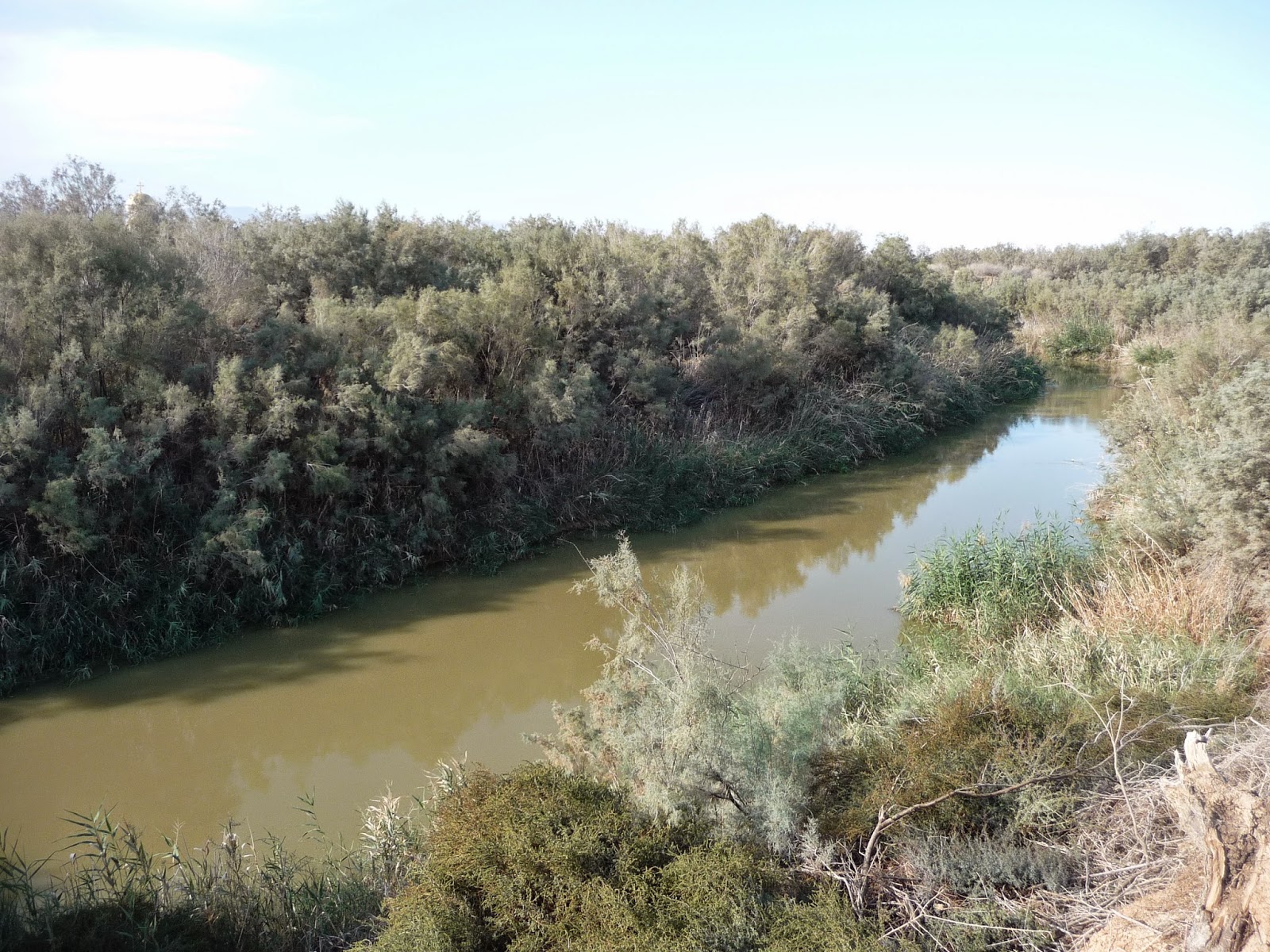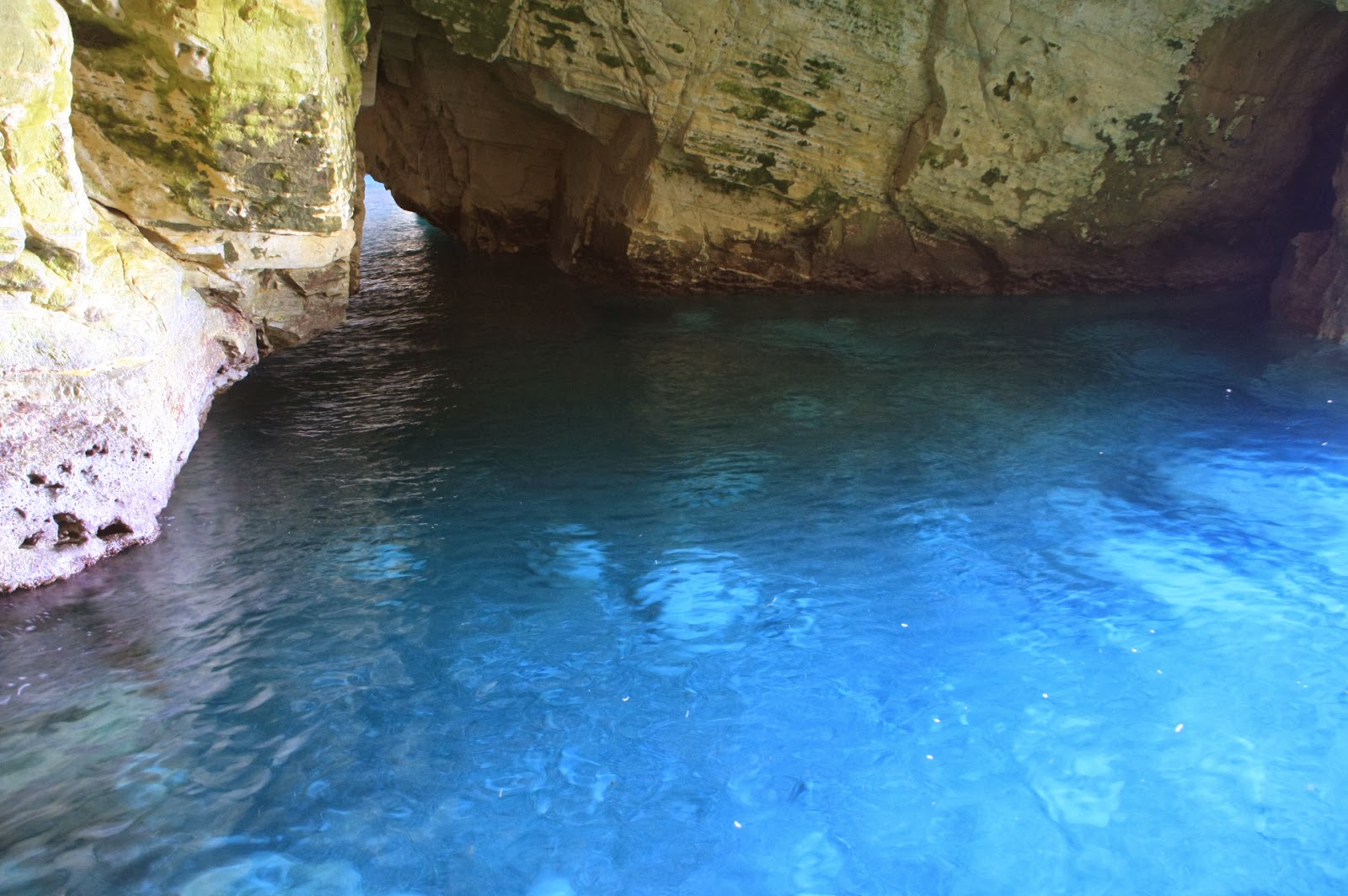Masada... one of the most visited sites in Israel. It is where all Jewish troops are taken, told the stories of the 960 Sicarii Jewish rebels who committed suicide rather than submit to the Romans. They are reminded of the Holocaust and given a stirring reminder.... "Never again!".
Here is a model showing the entire mountain top. Masada was built by Herod the Great. He was a paranoid man. He built a number of hide-a-ways. They were luxurious affairs, capable of sustaining life for long periods of time, if need be.
This view is looking towards the Dead Sea, but the main thing to notice is the little square in the lower right hand of the photo. It is at the bottom of the mountain in the valley, It is the perimeter remains of a Roman company... where they would have camped, at the time of the Roman siege, nearly 2,000 years ago! There were portions of several such camps surrounding the mountain.... mute evidence of the human tragedy that once took place here.
This is the ramp that was built by the Romans to breach Masada. It is 375 feet tall! All of it was hand quarried and hand carried in baskets. The people of Masada tried to kill the builders of the ramp until the Romans substituted Jewish slaves to do the actual work on the ramp. The people of Masada decided not to kill their Jewish brethren to save their own lives.
The Romans built a huge siege tower, with a battering ram, which they laboriously drug up the ramp with pulleys and started the attack. They finally succeeded in breaching the wall on April 15, 73 or 74 A.D.. 15,000 Roman and Jewish troops flooded through the breach... only to find the Jews had set all the buildings on fire... except the food buildings, and then committed suicide. Only 2 women and 5 children were found alive. It is possible that they wanted the Romans to know how long they could have survived in Masada.
Today, Masada has become a pilgrimage of sorts... Jewish soldiers, school groups, family groups; many wending their way up the siege ramp in an effort to increase their resolve never to be victims of the worlds rage again.
Here is a model showing the entire mountain top. Masada was built by Herod the Great. He was a paranoid man. He built a number of hide-a-ways. They were luxurious affairs, capable of sustaining life for long periods of time, if need be.
This view is looking towards the Dead Sea, but the main thing to notice is the little square in the lower right hand of the photo. It is at the bottom of the mountain in the valley, It is the perimeter remains of a Roman company... where they would have camped, at the time of the Roman siege, nearly 2,000 years ago! There were portions of several such camps surrounding the mountain.... mute evidence of the human tragedy that once took place here.
This is the ramp that was built by the Romans to breach Masada. It is 375 feet tall! All of it was hand quarried and hand carried in baskets. The people of Masada tried to kill the builders of the ramp until the Romans substituted Jewish slaves to do the actual work on the ramp. The people of Masada decided not to kill their Jewish brethren to save their own lives.
The Romans built a huge siege tower, with a battering ram, which they laboriously drug up the ramp with pulleys and started the attack. They finally succeeded in breaching the wall on April 15, 73 or 74 A.D.. 15,000 Roman and Jewish troops flooded through the breach... only to find the Jews had set all the buildings on fire... except the food buildings, and then committed suicide. Only 2 women and 5 children were found alive. It is possible that they wanted the Romans to know how long they could have survived in Masada.
Today, Masada has become a pilgrimage of sorts... Jewish soldiers, school groups, family groups; many wending their way up the siege ramp in an effort to increase their resolve never to be victims of the worlds rage again.







































